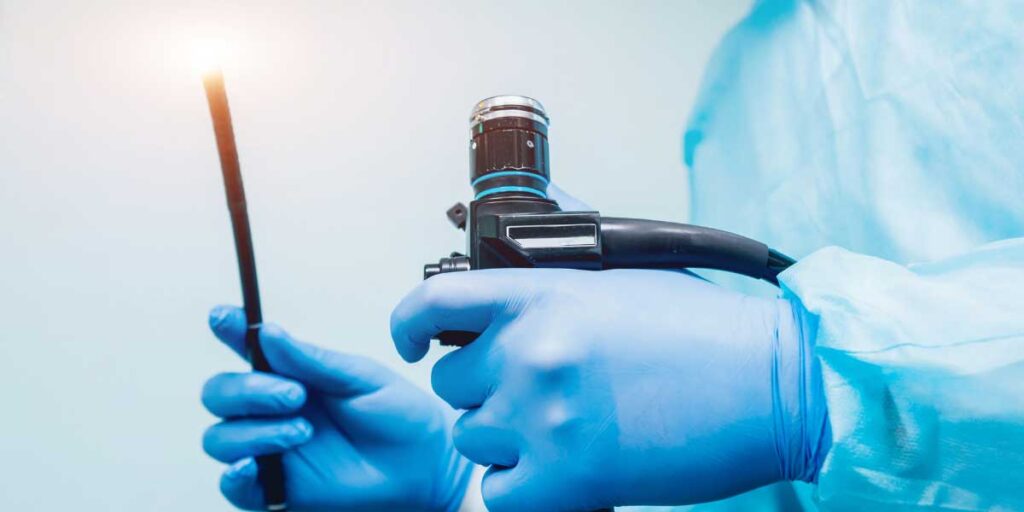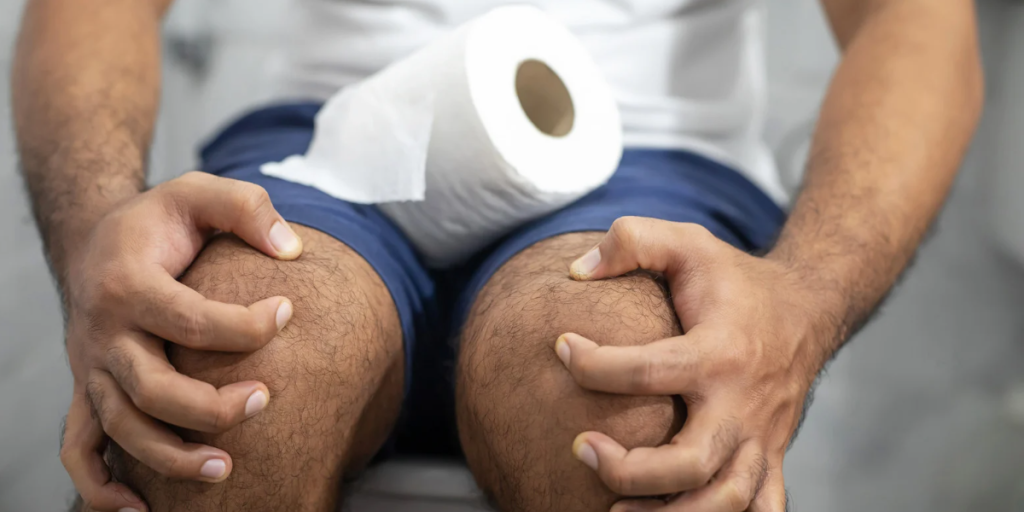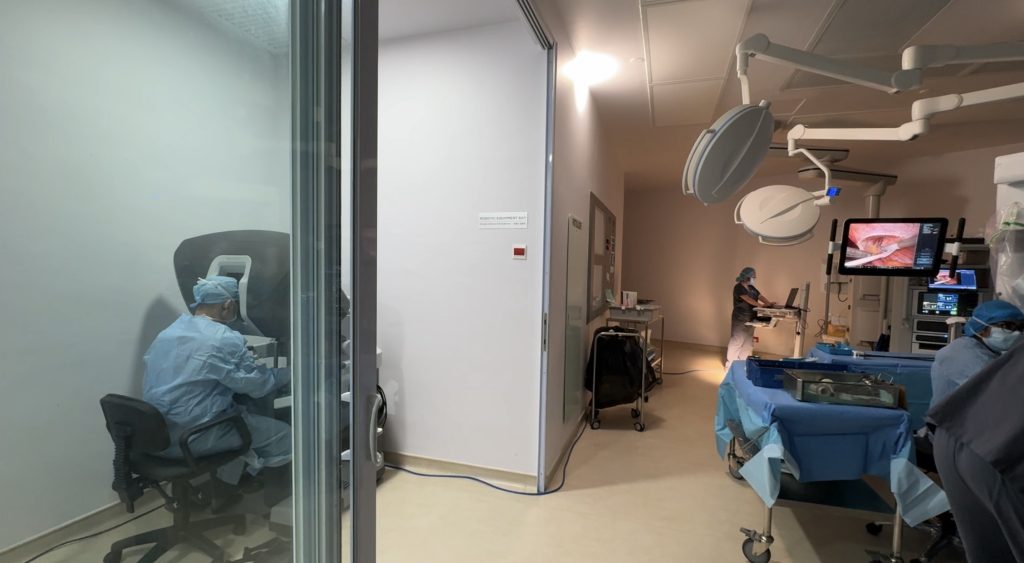Siti is a gentle, sweet 70-year-old grandmother and one of Dr. Lee’s regular patients for nearly 30 years. She feels rather embarrassed and shy.
“Tell me more,” Dr. Lee gently probes.
“Well, Dr. Lee, I’ve felt a bulge coming out of my back passage for the past three months, especially when I poo…” Siti’s face turns pink.
“It is painful. However, I’ve noticed it bulging even when I cough or sneeze! I’ve also noticed some mucus in my stools. What is wrong?”
Rectal Prolapse: What is It?
Perhaps you, or someone you care for, have experienced symptoms similar to Siti’s. You may be dealing with a condition known as rectal prolapse.
Let us break it down.
The rectum is the final part of your large intestine, located near the back passage, otherwise known as your anus. This muscular opening is where stool leaves the body.
In cases of rectal prolapse, the rectum slips out of the anus, causing a noticeable bulge.While it can be uncomfortable and sometimes painful, rest assured, it’s not a medical emergency and is treatable.
That said, rectal prolapse can understandably cause embarrassment. It causes discomfort and also affects your quality of life.
Am I At Risk?
Rectal prolapse occurs due to the weakening of the muscles that hold the rectum in place. This condition causes the rectum to slip out of the anus.
Several factors can increase the risk:
- Gender: Women are more prone to developing rectal prolapse, often due to anatomical differences and childbirth.
- Age: It is most common in individuals over 50, as ageing weakens pelvic support structures.
- Chronic Constipation: A long history of straining during bowel movements significantly increases the risk.
- Childbirth: Vaginal deliveries can weaken pelvic floor muscles, contributing to rectal prolapse.
- Neurological Conditions: Injuries to the spinal cord or a history of stroke can impair muscle function and nerves supplying the lower portion of the larger intestine.
Understanding these risk factors can help detect and prevent of rectal prolapse.

Signs and Symptoms of Rectal Prolapse
If you have rectal prolapse, you may notice several symptoms:
- A reddish lump or bulge appears at your anus, especially after straining during bowel movements, coughing, sneezing, or lifting heavy objects. Sometimes, this lump may go back into your back passage on its own, while in other cases, it remains outside.
- Mucus in your stools, which can be alarming.
- A sensation of incomplete bowel emptying, making trips to the bathroom feel like you’re not fully ‘done’ or settled.
- Abdominal cramps or general discomfort in the tummy region.
- Bleeding from the rectum may occur due to irritation or trauma to the prolapsed tissue.
- Changes in bowel habits, including persistent constipation or loose stools. Some individuals may experience alternating cycles of both.
- Pain, irritation, or itchiness around the anus, is often caused by the protruding rectal tissue.
How is it Diagnosed?
Rectal prolapse can sometimes be mistaken for haemorrhoids, a condition where veins in the anus and rectum become swollen due to chronic constipation or straining.
Because the two conditions share similar symptoms, further tests are often needed to tell them apart.
Your doctor will ask detailed questions about your symptoms, medical history, and lifestyle to understand your condition better. They will also examine your back passage to check for any abnormalities.
This step-by-step process ensures an accurate diagnosis, helping your doctor recommend the most suitable treatment to address your symptoms effectively.
Tests your doctors may run:
Defecogram
An X-ray or MRI taken while you’re having a bowel movement can help your doctor get a clearer picture of what’s happening. This test helps check if there are any issues with the muscles or structures around your rectum and anus.
Colonoscopy
It allows your doctor to examine your entire large bowel using a scope. It’s used to rule out other potential causes, such as polyps, cancer, or haemorrhoids. You’ll be given a sedative to put you to sleep during the procedure. You won’t feel any pain or discomfort.

Anal manometry
A small probe will be gently inserted through your rectum to assess the condition of your sphincter muscle, anus, and rectum while you’re having a bowel movement.
Specific urologic and gynaecology evaluations
Considering your relevant risk factors, your doctor may also evaluate the strength and condition of your pelvic floor. This helps check for any weak muscles or signs of prolapse in the bladder or uterus.
What are the Complications of Rectal Prolapse?
- Inability to manually push the prolapse back: There is a risk of cutting off the blood supply to that part of the rectum, leading to strangulation—which is a medical emergency.
- Bleeding and ulceration: Can occur in the rectum due to prolonged prolapse.
- Ongoing pain and discomfort: Sometimes, rectal prolapse can be painful, making everyday activities difficult and causing a lot of distress.
- Impact on daily activities: Difficulty controlling bowel habits and the sensation of a bulge from the back passage can be very upsetting, affecting the overall quality of life.

Treatment Options for Rectal Prolapse
Treatment for rectal prolapse is tailored to each individual, considering factors such as age, gender, overall health, and how the condition impacts daily life.
If constipation is identified as the cause, your doctor will focus on treating it and preventing straining. Adopting a healthy lifestyle, including increasing fibre intake, can be beneficial.
Medications like suppositories or stool softeners may be prescribed to prevent constipation and hard stools. In more severe cases, surgery may be the most effective solution to treat rectal prolapse.
Surgical Options
Rectal prolapse repair through the abdomen
- Your surgeon will make a small cut in your abdomen to move your rectum back into place using a mesh sling or stitches. The rectum will then be secured to your sacrum (tailbone).
- If you have chronic constipation, your surgeon may remove a part of your colon to help treat the condition.
- Recurrence of the prolapse is rare with this surgical method, with less than 10% of patients experiencing it again after surgery.
Laparoscopic rectal prolapse surgery
- Your surgeon will make several small incisions in your abdomen.
- Through these incisions, a scope with a tiny camera and surgical tools will be inserted to repair the prolapse.
- This minimally invasive procedure carries a lower risk of complications and pain, and typically results in a shorter hospital stay, helping you recover more quickly.
Robotic surgery
- This procedure is similar to laparoscopic surgery. Instead of using regular tools, your surgeon will use a high-tech robotic system.
- This gives the surgeon more control and accuracy, making the surgery less invasive and helping you recover faster, with less discomfort.

Perineal recto sigmoidectomy
- Also known as the ‘Altemeier’ procedure, this procedure involves repairing the structures around the anus.
- During the procedure, the prolapsed rectum is removed, and the colon is then sewn to the anus.
- This approach typically results in a shorter hospital stay, less pain and a quicker recovery after the surgery.
Depending on the type of surgery, you may be given:
- general anaesthesia to put you to sleep, or
- you could stay awake while the lower half of your body is numbed with a spinal block.
Your doctor will discuss the best option for you beforehand.
Are there any Risks?
The surgery is generally considered safe, with a smooth recovery for most patients.
There is a low risk of complications such as bleeding, infection, or leakage of stool through the operated area. However, there’s a slight possibility of an allergic reaction to the anaesthesia used.
Some patients may experience faecal incontinence, or difficulty controlling bowel movements, after the procedure. To prevent this, your surgeon may perform a levatorplasty, which involves tightening the pelvic floor muscles during the surgery.
While the risk of recurrence of rectal prolapse is low, it’s important to follow post-surgery care instructions to minimise this risk.
What To Expect After Surgery
After surgery, your doctor will closely monitor your recovery while you’re in the hospital.
You’ll begin with clear fluids and gradually transition back to solid foods as your body heals.
To support your recovery, your doctor may recommend drinking plenty of fluids, eating high-fibre foods, and using stool softeners to avoid straining during bowel movements.

These steps help prevent constipation and reduce the risk of your rectal prolapse returning.Your doctor may also refer you to a physiotherapist to help strengthen your pelvic floor muscles, improving support for the rectum.
You can generally recover within 4 to 6 weeks after surgery.
It’s essential to attend follow-up appointments with your surgeon to monitor your progress and address any concerns or complications that may arise during your recovery.
Get Checked-Up Today!
If you or a loved one are experiencing symptoms of rectal prolapse, it’s important to book a medical check-up with your doctor as soon as possible. Early detection is key, as rectal prolapse is easier to manage when treated promptly.
References
- Rectal prolapse https://www.betterhealth.vic.gov.au/health/conditionsandtreatments/rectal-prolapse#complications-of-rectal-prolapse [Last accessed 13 January 2025]
- Rectal prolapse https://www.hopkinsmedicine.org/health/conditions-and-diseases/rectal-prolapse#:~:text=Rectal%20prolapse%20is%20when%20part,severe%20and%20may%20need%20surgery. [Last accessed 12 January 2025]
- Rectal prolapse https://fascrs.org/patients/diseases-and-conditions/a-z/rectal-prolapse-expanded-version [Last accessed 12 January 2025]